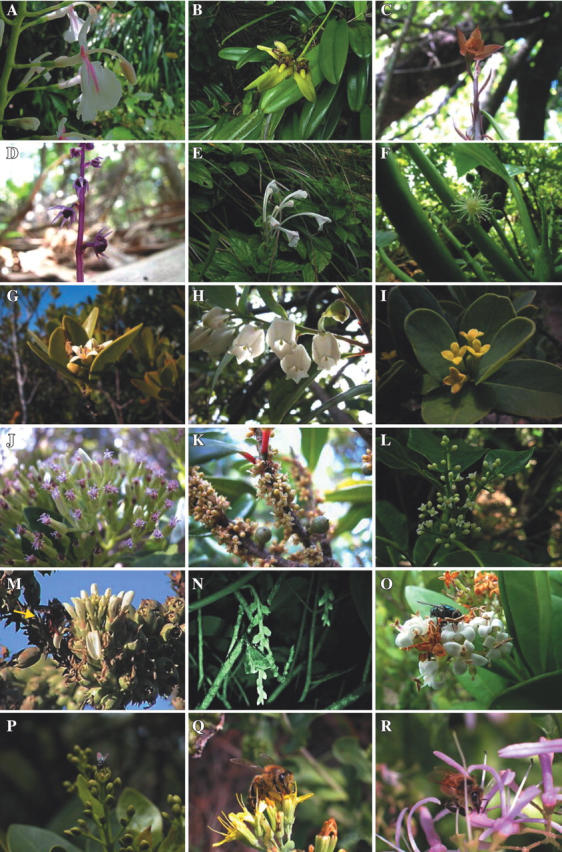Fig. 2.

Examples of the wide range of characteristics for flowers endemic to the Ogasawara Islands. (A) Alpinia boninensis (Zingiberaceae) has large, white flowers pollinated by the endemic Xylocopa ogasawarensis (Anthophoridae, Hymenoptera) in the forest understorey. (B) Bulbophyllum boninensis (Orchidaceae) has a few medium-sized, yellow flowers and may be pollinated by specialist moth or by X. ogasawarensis in an understorey habitat. (C) Eulophia toyosimae (Orchidaceae) and (D) Sciaphila okabeana (Triuridaceae) are also rare understorey herbs and saprophytes. (E) Scutellaria longituba (Labiatae) has a very long flower tube compared with that of other Scutellaria species, but lepidopteran pollinators have not been observed. (F) A highly endangered tree, Claoxylon centinarium (Euphorbiaceae), has small, subdued flowers that are mainly visited by flies. (G) Santalum boninense (Santalaceae) has small, white, bell-shaped flowers but sets few fruits despite frequent visit by honeybees. (H) Vaccinium boninense (Ericaceae) selects for certain pollinators by means of the narrow floral mouth. (I) Wikstroemia pseudoretusa (Thymelaeaceae) and (J) Dendrocacalia crepididifolia (Compositae) have evolved to dioecy in the Ogasawara Islands. (K) Myrsine maximowiczii (Myrsinaceae) and (L) Boninia glabra (Rutaceae) have many small, white flowers, as is also the case for many endemic woody species. (M) Lobelia boninensis (Campanulaceae) has a monocarpic life cycle and the shape of its flowers is suited for pollination by X. ogasawarensis (arrow). (N) Stachyurus macrocarpus (Stachyuraceae) is also a highly endangered shrub, and is pollinated by nocturnal moths (recorded by the video camera's ‘night shot’ function). (O) Ligustrum micranthum (Oleaceae) and (P) Machilus boninensis (Lauraceae) are pollinated by flies. Introduced honeybees visit many endemic species including endangered species such as (Q) Crepidiastrum grandicollum (Compositae) and sometimes act as nectar robbers for species such as (R) Hedyotis grayi (Rubiaceae).
